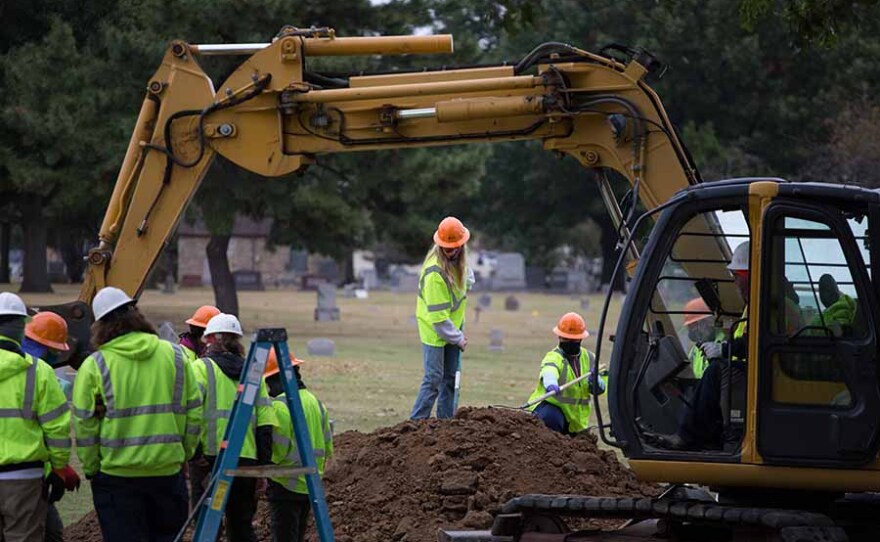—Produced and directed by Emmy-winning director Jonathan Silvers, new documentary explores the 1921 tragedy, the history of anti-Black violence and Black resilience—
Although rarely mentioned in textbooks, there is no question that the Tulsa Race Massacre was one of the most horrific incidents of racial violence in American history.
As the country continues to reflect on the shocking murders and arson that took place from May 31-June 1, 1921, and considers more recent incidents of social injustice like the killing of George Floyd last May, a new documentary “Tulsa: The Fire and the Forgotten,” examines this deadly assault on humanity on the 100th anniversary of the crime.
Directed by Jonathan Silvers and reported by The Washington Post’s DeNeen L. Brown, “Tulsa: The Fire and the Forgotten” looks back at the explosion of violence when the once prosperous neighborhood known as “Black Wall Street” was destroyed by a mob of white residents.
Hundreds of Black-owned businesses and homes in the Greenwood district of Tulsa, Oklahoma, were burned to the ground, killing an estimated 100-300 Black residents and leaving an estimated 10,000 Black residents homeless.
This 90-minute documentary, narrated by Emmy-winning journalist Michel Martin, Amanpour and Company contributor and weekend host of NPR’s “All Things Considered,” also chronicles present-day public efforts to memorialize the Tulsa Race Massacre and other racial violence around the country, and how Black and white communities view such efforts.

“Stories have power and if they're told, they can change the future and they can provide some healing. So my goal here would be to finally find answers for some of the descendants of the victims, and if they do find bodies, put those souls to rest,” said Brown. “This spring, the City of Tulsa plans to commemorate the 100th anniversary of the massacre, as descendants of survivors demand reparations for what was lost and protest against current oppression and racism.”

Brown, who was inspired by her own personal connection to Tulsa, investigates the deadly assault and racial atrocity that has gone without punishment by the law as she explores issues of atonement, reconciliation and reparation in the past, present and future through the historical lens of white violence and Black resistance.
Brown and Silvers sit down with descendants of Greenwood residents, business owners and today’s community activists for an honest conversation on the community’s demands for reparations and the efforts to revive the Black district of Greenwood through education, technology, business development and more.

The film features interviews with civil rights activists, lawyers, Black community leaders, archaeologists, anthropologists and historians, including:
- Greg Robinson II (community activist and descendant)
- Kristi Williams (community activist)
- Regina Goodwin (Oklahoma State Representative – Tulsa House District 73)
- G.T. Bynum (mayor of Tulsa)
- Rev. Robert Turner (pastor, AME Church)
- Dreisen Heath (investigator, Human Rights Watch)
- Nicole Austin-Hillery (director of U.S. Programs, Human Rights Watch)
- Hannibal Johnson (historian) and more
Producer Eric Stover, founder of the Human Rights Center at University of California, Berkeley School of Law, who has investigated numerous acts of genocide and mass murder over many decades, also speaks with Tulsa natives and surveys the current excavation and search for mass graves.
The documentary also features a moving performance from Tulsa native artist Majeste Pearson, who is scheduled to perform the Black national anthem on the 100th anniversary of the Tulsa Race Massacre.
“The film’s power is in hearing the voices and memories of those whose very existence was redefined by this massacre,” said Eugenia Harvey, executive producer for Chasing the Dream. “The unflinching resilience of north Tulsa’s descendants and residents gives inspiration to all Americans seeking truth in our nation’s history.”
As Tulsa Mayor G.T. Bynum cautions in the film, “It is terrifying because you realize that it could happen today. It is an instance of hatred overpowering the rule of law in a community…I hope that people see that it's never too late to try and do the right thing. The investigation that we're doing right now, we shouldn't be doing it. The city should have done this 98 years ago.…We as a community are trying to do right by our neighbors in 2020 and 21.”
Following This Film:
Premiering Monday, May 31 at 10:30 p.m. on KPBS TV, "Tulsa Revisited, A PBS NEWSHOUR WEEKEND Special" will explore the events and themes of the documentary in the context of history and current social issues, including civil unrest, reparations, race in America and generational equity. PBS NEWSHOUR WEEKEND substitute anchor Michael Hill hosts.

Watch On Your Schedule:
This film is available on demand with KPBS Passport, video streaming for members at $60 or more yearly, using your computer, smartphone, tablet, Roku, AppleTV, Amazon Fire or Chromecast. Learn how to activate your benefit now.
With the PBS Video App, you can stream your favorite and local station shows. Download it for free on your favorite device. The app allows you to catch up on recent episodes and discover award-winning shows.
Credits:
A production of Saybrook Productions Ltd. in association with The WNET Group. Produced and directed by Jonathan Silvers. Produced and reported by DeNeen L. Brown. Produced by Eric Stover. For The WNET Group: Lesley Norman is executive producer, Stephen Segaller is executive-in-charge and Eugenia Harvey is executive producer for Chasing the Dream.
“The Tulsa Race Massacre is an atrocity that is often overlooked in our history,” said Lesley Norman, executive producer for The WNET Group. “With this documentary, we hope to examine the true history of race relations in America while paying respect to the lives lost and celebrating those fighting towards a better future for Black Tulsa residents and for African Americans across the country.”





